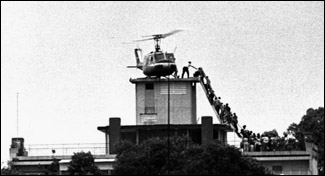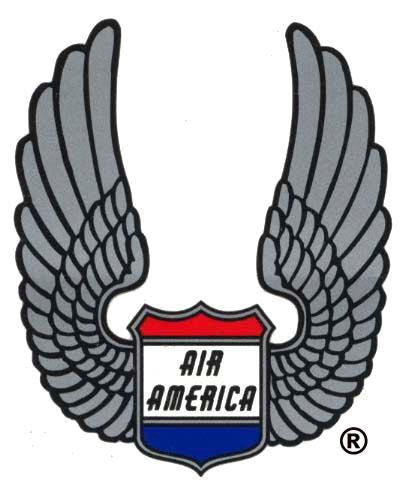CAT PILOTS TO BE HONORED BY FRANCE
France’s Highest Military Honor Awarded Fifty Years After Epic Indochina Battle
On February 24, 2005, the Government of France will honor the seven surviving American civilian pilots who voluntarily flew many hazardous supply missions to the besieged French Expeditionary Forces gallantly holding out at Dien Bien Phu (North Vietnam). Fifty years after their valiant service in support of their French comrades, these Americans will receive France’s highest military and civilian honor, “Chevalier de la Légion d'Honneur” (Knight’s version). The “Legion of Honor,” created by Napoleon Bonaparte, dates back to 1802.
The presentation ceremony will take place at the official residence of the French Ambassador to the United States in Washington D.C. His Excellency Jean-David Levitte will present the Legion d’Honneur to the former pilots in a formal presentation. Family members will accompany the pilots to the ceremony. U.S. Government officials and other distinguished guests have been invited to witness this historic occasion.
Honoree Pilots:
• Roland Nelson Duke
• William Preston Hobbs
• Allen Lawrence Pope
• Douglas R. Price
• Monson William Shaver
• Roy Furniss Watts
• Robert Lee Brongersma
CAT Pilots Deceased During* or After Dien Bien Phu
Wallace Buford*
Walter C. Buttons
Darrell D. Carden
Ernest W. Cedergren
Maurice K. Clough
Stuart E. Dew
John R. Dexheimer
Norwood N. Forte
William Donaldson Gaddie
Charles E. Hayes
Hugh H. Hicks
Neese D. Hicks
Paul R. Holden
Henry J. Hudson
Frank L. Hughes
August L. Judkins
Steve A. Kusak
David A. Lampard
S. McDonnell
James B. McGovern, Jr.*
Hugh L. Marsh
Michael L. McCallum
Kenneth L. Milan
Cyril M. Pinkava
John R. Plank
Thomas C. Sailer
Eric Shilling
John M. Verdi
Frederick F. Walker
Arthur D. Wilson
* Indicates killed in action during Dien Bien Phu support mission.
Historical Overview
Civil Air Transport
The French Indochina War (1946-1954) presaged the calamitous Vietnam War (1964-1975) that has scarred America’s memory. The first American to die in what was then known as French Indochina was an OSS officer, LTC Peter Dewey. However, the first American airmen to die in combat in Vietnam were civilian volunteers secretly employed by of the Central Intelligence Agency. They were pilots of a civilian Far East-based airline named Civil Air Transport (CAT).
Major General Claire Lee Chennault and Whiting Willauer founded CAT in 1946 in China. General Chennault was the legendary World War II commander of the famed “American Volunteer Group,” better known as the “Flying Tigers.” In late 1950 the CIA secretly purchased CAT and used it as its proprietary airline to undertake countless covert missions throughout the Asia and elsewhere, all the while providing routine cargo and passenger air services by day.
French Indochina
In an effort to gain access to resource-rich Southeast Asia countries commonly referred to as Indochina, France established a colonial presence during the 1860s. Their colonial reign was interrupted by Japan’s occupation of Indochina in 1941. At the end of World War II France sought to reestablish its control in Indochina. The spread of nationalistic sentiment fueled the rise of communism throughout the region. This made it necessary for France to maintain a large military presence in Indochina to combat the Viet Minh communists headed by Ho Chi Minh. Initially the French forces were successful because they were better equipped and had total air superiority. U.S. foreign policy at the time called for “containment” of communism in Asia by providing money, supplies and materiel to our allies. The U.S. government funded an estimated 80 percent of the cost of the French Indochina War.
Following the 1949 defeat of General Chiang Kai-shek’s Nationalist Chinese government by the communist forces led by Mao Tse-tung, the balance of military power in French Indochina tilted abruptly. The People’s Republic of China helped set the stage for victory over the French Union Forces. They supplied the Viet Minh with vast amounts of weaponry, ammunition and training, as well as American weapons captured during the Korean War. The Chinese government provided military advisors plus countless laborers to move the weapons and war materiel from China’s border to the battle site. They also provided a battle-tested regiment of anti-aircraft gunners.
Pressure on the hard-pressed French military and civilian air transport capacity grew early in 1953 when the Viet Minh invaded Laos. The French military establishment called upon President Dwight Eisenhower for additional assistance. In turn, Secretary of State John Foster Dulles contacted his brother, Allen Dulles, the newly appointed Director of Central Intelligence. DCI Dulles arranged for CAT pilots, now secretly working for the CIA, to fly Fairchild C-119’s, also known as “Flying Boxcars.” To create deniability the USAF transport aircraft were painted with French Air Force markings. During “Operation SQUAW” a dozen CAT pilots transported tons of materiel and supplies to French forces in Laos.
Dien Bien Phu
In late 1953, the French military command in Indochina decided to challenge the Viet Minh deep within enemy-held territory. The site selected was Dien Bien Phu, a cluster of sleepy villages in a broad valley close to the Lao border. Tall mountains surround Dien Bien Phu. The military planners were confident that with their superior firepower and an aerial lifeline they would prevail against their weaker enemy. They believed a set-piece artillery battle would draw out the enemy and they could destroy the Viet Minh once and for all. “Operation Castor” began when French paratroopers were dropped into Dien Bien Phu in November of 1953. Eventually some 15,000 French Union Forces established a series of nine interlocking outposts rumored to be named after mistresses of the French commanding general. The French quickly set to work to improve the airfield and fortifications. The USAF trained French military and civilian pilots in the operation of the C-119s as well as trained ground crews in the maintenance of the aircraft.
General Vo Nguyen Giap, the Viet Minh military commander, countered by covertly moving hundreds of artillery pieces, rocket launchers, mortars and anti-aircraft batteries onto key heights looking down on the French outposts in the valley below. It was a gargantuan, backbreaking task requiring the effort of tens of thousands of laborers. Somehow they manhandled the heavy artillery pieces and ammunition from the PRC border to the mountaintops surrounding the battlefield. When Giap’s forces were in place, his heavy guns outnumbered the French by four to one. In addition, his 50,000-man army and legions of laborers dug trenches closer and closer to the French perimeter and even dug tunnels under some positions.
The Siege
Before the siege began in earnest the French command came to realize the vulnerable position they were in. They turned to the U.S. for additional tactical air support. President Eisenhower was reluctant to commit America’s military forces so soon following the recent cease-fire in Korea. There was also a real concern overt U.S. tactical air support would trigger the introduction of the PRC’s aircraft into the war.
A compromise was reached. An enhanced aerial re-supply operation code-named “Operation SQUAW II” was created. The CIA tasked CAT to assist the French civilian and French Air Force pilots to drop supplies to the French Union forces. Thirty-seven CAT pilots volunteered to fly these hazardous missions. The Americans were based out of the French airbase Cat Bi near Haiphong. They flew 682 sorties between March 13 and May 6, 1954.
Operation SQUAW II coincided with the communist offensive. On March 13 Giap launched a devastating artillery barrage against the French encampments. This effectively shut down the landing strip at Dien Bien Phu. With the advantage of the high ground, the superior Viet Minh firepower inflicted devastating damage. Buttressed by a PLA antiaircraft regiment, the Viet Minh were able to neutralize effective aerial re-supply of the French encampments. Giap followed with wave after wave of relentless mass ground attacks like those used by the Chinese forces during the brutal Korean War. The French and CAT pilots braved the deadly anti-aircraft fire and airdropped supplies. Additional brave French Union paratroopers volunteered to join the fray. In the end their efforts proved futile. Thirteen French transport pilots died during the battle of Dien Bien Phu. Two Americans lost their lives. More than 200 French and American aircraft were damaged or destroyed during the brutal siege.
On the afternoon of May 6, 1954, six CAT C-119s departed Cat Bi airbase for Dien Bien Phu. A C-119 flown by James “Earthquake McGoon” McGovern and Wallace Buford were slated to drop desperately needed ammunition to the beleaguered French paratroopers holding out at an encampment named Isabelle. As they approached the drop zone the port engine sustained damage by a 37-mm anti-aircraft round; a second burst damaged the horizontal stabilizer, both seriously impairing the crew’s ability to maintain level flight.
Guided by Steve Kusak and Al Pope in the lead aircraft, McGovern and Buford struggled for 40 minutes to keep their aircraft aloft long enough to attempt an emergency landing at a remote emergency landing strip near Muong Het in neighboring Laos. Tragically, just a few hundred yards short of their destination, a wing tip clipped a tree. The aircraft cart wheeled, broke in half and burned. A young French Army officer, Lieutenant Jean Arlaux, and a Malay paratrooper were the sole survivors of the crash landing. The paratrooper later died from wounds he sustained. Two other French paratroopers, Bataille and Rescorio, also perished in the crash.
The two pilots, McGovern and Buford, perished and thus became the first American aviators to die in combat in Vietnam. The French garrison surrendered the next day.
Soon after the fall of Dien Bien Phu, French and Viet Minh representatives negotiated the end of hostilities. Ten years later the U.S. military will face General Giap in Vietnam. Following in the footsteps of CAT, Air America was to demonstrate the same esprit de corp as the Dien Bien Phu pilots personified.

Other helpful contacts include:
• Embassy of France, Press and Communication Office: (202) 944-6060
• Dr. William M. Leary, Professor of History Emeritus, University of Georgia, Athens, GA. Dr. Leary has written extensively about Civil Air Transport (CAT) and CIA covert air operation in Asia: wleary@arches.uga.edu
• Felix Smith, former CAT pilot, author and on the CAT Association Board of Directors. Mr. Smith worked with the pilots being honored and flew in Indochina himself: jks707@earthlink.net.



